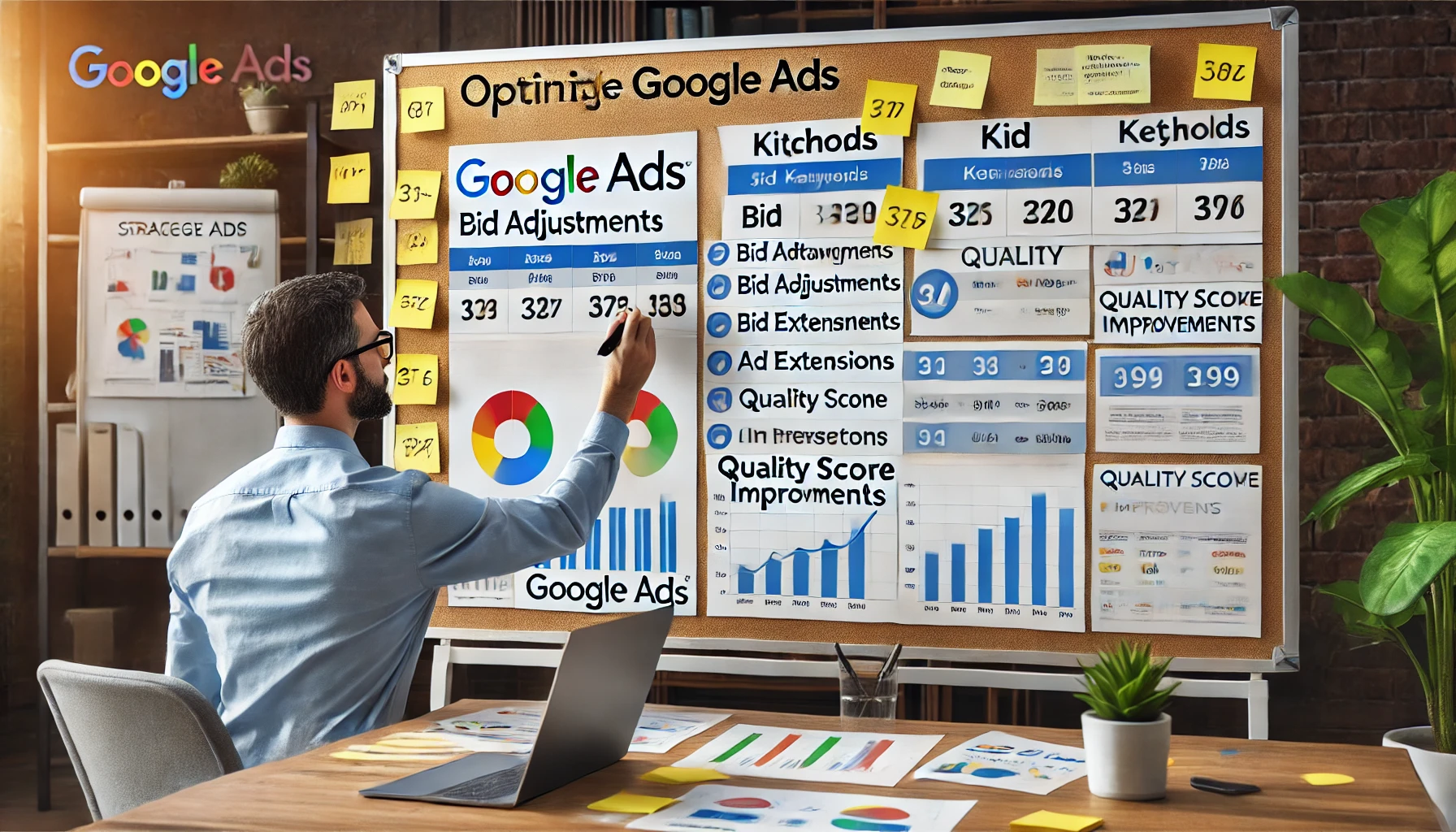📌 Introduction
Running Google Ads campaigns is a powerful way to drive traffic, generate leads, and increase sales. However, if campaigns are not properly optimized, they can become costly and inefficient. Many advertisers struggle with high CPC (Cost Per Click), low conversion rates, and poor ROI because they don’t apply the right optimization techniques.
This article will walk you through step-by-step strategies to optimize your Google Ads campaigns, reduce wasted spend, and improve performance using data-driven insights and automation.
🎯 Why Optimizing Google Ads is Crucial
✔ Reduces Costs – Helps lower CPC and improves budget efficiency.
✔ Increases Conversions – Better targeting and ad quality lead to more sales and leads.
✔ Improves Ad Rank – Well-optimized ads have a higher chance of appearing in top positions.
🔎 1. Improve Your Quality Score
Google Ads assigns a Quality Score (1-10) based on ad relevance, landing page experience, and CTR. A higher Quality Score leads to lower CPC and better ad placements.
✅ How to Improve Quality Score:
✔ Use relevant keywords in ad copy and landing pages.
✔ Optimize landing pages for speed and user experience.
✔ Increase CTR with compelling headlines and clear CTAs.
🛠 Recommended Tools:
- Google Ads Quality Score Checker – Tracks ad relevance.
- Google PageSpeed Insights – Analyzes landing page load speed.
📊 2. Use Smart Bidding Strategies
Google Ads offers automated bidding strategies that optimize for conversions and maximize ROI.
✅ Best Smart Bidding Strategies:
✔ Target CPA (Cost Per Acquisition) – Automatically adjusts bids to get the most conversions at a set cost.
✔ Target ROAS (Return on Ad Spend) – Maximizes revenue based on ad spend.
✔ Maximize Conversions – Uses machine learning to get as many conversions as possible.
🛠 Recommended Tools:
- Google Smart Bidding – Automates bid adjustments.
- Revealbot – Helps automate bid scaling.
📢 3. Optimize Keyword Targeting
Keyword optimization is essential for reaching high-intent users and reducing wasted ad spend.
✅ How to Optimize Keywords:
✔ Use long-tail keywords to reduce CPC and increase relevancy.
✔ Add negative keywords to filter out irrelevant searches.
✔ Monitor Search Term Reports to identify wasted ad spend.
🛠 Recommended Tools:
- Google Keyword Planner – Finds cost-effective keywords.
- SEMrush / Ahrefs – Analyzes keyword competition.
📉 4. Improve Ad Copy & Extensions
Ad copy directly affects CTR and Quality Score. Strong headlines and descriptions attract more clicks.
✅ Best Practices for Ad Copy:
✔ Use numbers and statistics in headlines (e.g., “Save 50% Today!”).
✔ Create urgency-driven CTAs (“Limited Offer – Sign Up Now!”).
✔ Add ad extensions (site links, callouts, structured snippets).
🛠 Recommended Tools:
- Google Ads Preview Tool – Checks how ads appear in search results.
- Canva / Adobe Express – Helps design better display ads.
🔄 5. Retargeting & Audience Segmentation
Remarketing helps bring back visitors who didn’t convert the first time.
✅ How to Optimize Retargeting:
✔ Use Google Display Network (GDN) for banner retargeting ads.
✔ Segment audiences based on website interactions (cart abandoners, page visitors).
✔ Show personalized offers to returning visitors.
🛠 Recommended Tools:
- Google Ads Remarketing Lists – Creates custom audience segments.
- AdRoll – Manages multi-channel retargeting campaigns.
🚀 Conclusion
Optimizing Google Ads campaigns is essential for improving performance, reducing costs, and increasing conversions. By focusing on Quality Score, Smart Bidding, keyword targeting, and retargeting, advertisers can maximize their results.
🔥 Key Takeaways
✔ Improve Quality Score for lower CPC and better ad rank.
✔ Use Smart Bidding Strategies to optimize for conversions.
✔ Target high-intent keywords and use negative keywords to avoid wasted spend.
✔ Enhance ad copy and extensions to increase CTR.
✔ Implement retargeting strategies to re-engage lost visitors.
By applying these strategies, you’ll be able to run high-performing Google Ads campaigns with better ROI! 🎯
